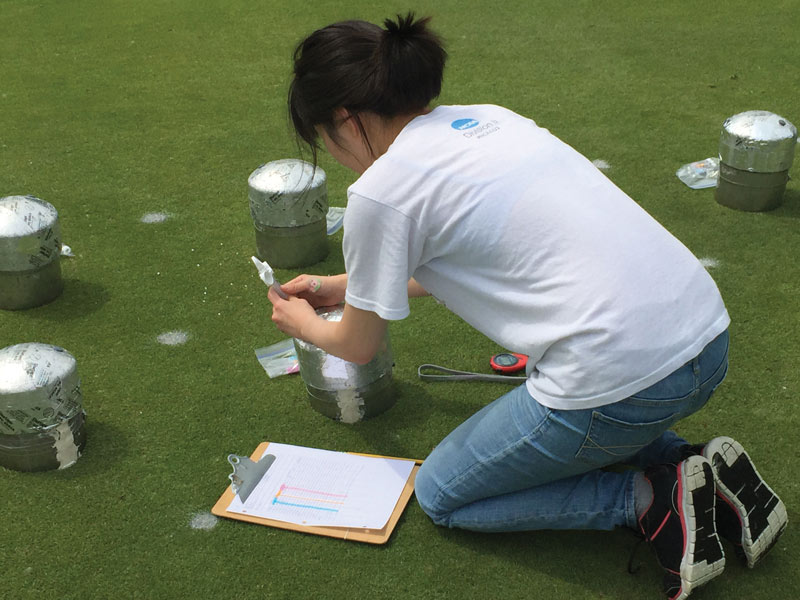
Photo by Kristina Walker
Soil moisture and temperature are known predictors of greenhouse gas (GHG) losses from highly managed turfgrass. Managing irrigation to conserve water may reduce GHG losses, but it may also reduce overall turfgrass quality.
A field study was developed to evaluate the impact of four irrigation regimes (Business as Usual, Supplemental Rainfall, Syringing, and Natural Rainfall), nitrogen (N) source (urea and Milorganite) and nitrogen rate (146 kg N/hectare/year and 293 kg N/hectare/year) on GHG (carbon dioxide [CO2], methane [CH4] and nitrous oxide [N2O]) emissions from creeping bentgrass greens.
Weekly sampling took place throughout the 2015 growing season. Gas samples were taken using a vented closed gas chamber for 40 minutes following USDA-ARS GRACEnet methods. Soil temperature, soil moisture, canopy temperature, canopy greenness and turf quality data were also collected.
We found that nitrogen sources applied at the high N rate produced significantly higher (p < 0.01) CO2 and N2O emissions. Areas irrigated under full sunlight (Supplemental Rainfall and Syringing) had higher soil temperatures and, therefore, significantly higher emissions of CO2 and N2O.
The reverse was true for irrigation treatments shaded by nearby trees (Business as Usual and Natural Rainfall). Both canopy greenness and turf quality were significantly (p < 0.05) affected by irrigation practices and N source and rate. The higher rate of urea and Milorganite improved canopy greenness. Both N rates of Milorganite produced higher turf quality. The irrigation regime significantly affected (p < 0.001) canopy temperature. Treatments in full sun (Supplemental Rainfall and Syringing) had higher canopy temperatures.
— Kristina S. Walker, Ph.D., and Katy E. Chapman, Ph.D., University of Minnesota Crookston
Editor’s note: An earlier version of this summary was published in the 2016 ASA-CSSA-SSSA Meeting Abstracts, ASA, CSSA and SSSA, Madison, Wis.
Teresa Carson is GCM’s science editor.